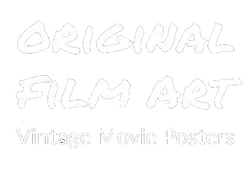Shipping Worldwide
Shipping Worldwide
year
Country
Title
Gift Cards
Stone Lithograph Movie Posters
February 14, 2018 1 min read
Many of the earliest film posters were printed using stone lithography. This intensive process relies on the basic facts that water and oil do not mix and porous stones (like limestone) will absorb both substances.
Lithography was developed in the 1790s by German actor and playwright Johann Alois Senefelder. Senefelder called his process "stone printing" however the term lithography (lithos is Greek for stone) soon became the adopted name for the process.
Lithographers draw on flat-stones with oil-based crayons or ink. The stones are then etched with a mixture of water and acacia gum (made from the sap of acacia trees). After the treatment, ink can be forced into the stone and the resulting prints feature exceptional tone, depth and color.
The process is incredibly labor intensive as a different stone has to be used for each color in a poster. After World War I, lithographers mainly used zinc and aluminum plates as real stone became too scarce and expensive.
Many one-sheet movie posters were printed by stone lithography in the 1920s and 1930s but this process soon gave way to the easier and less expensive color offset printing which was invented in the 1920s.
Leave a comment
Comments will be approved before showing up.
Subscribe
Sign up to get the latest on sales, new releases and more …





